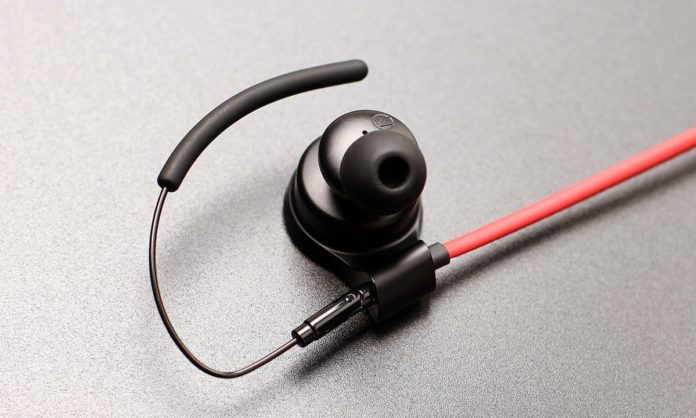Origem, a company based in Hong-Kong just released a pair of wireless earphones, and the best thing is, these tiny little buggers won’t fall onto the road just because you decided to shake your head vigorously when the beat dropped (or you abruptly stopped your bike).
The official website lists HDR audio, a convenient fit, and voice controls via the in-line mic as some of the features, and after a few days of testing, I can happily report that the Origem HS-3s checks all these. Oh, and for people who don’t know (and want to know), HDR audio stands for High Dynamic Range, well, audio, which is an onboard technique to design a mix using different level values spanning across a very high dynamic range as occurs in nature.

The HDR algorithm detects the sound pressure of the listening environment and volume of the sound to dynamically adjust for all different frequency levels based on ISO226 Equal Loudness. All of this means that the earphones deliver detailed highs, crystal clear mids, and powerful bass. Like a perfect combination of a sub-woofer and a high-frequency speakers, to an attuned (or snobby) audiophile, these might fall slightly short, but to an untrained ear, there really shouldn’t be a problem. That’s a lot of technical jargon, honestly, all one needs to know is that HDR audio sounds good, much better than what one is used to hearing with their normal earphones, that is.

Origem claims that a more accurate perceived loudness is delivered from the combination of HDR audio algorithm and Origem HS-3’s 10mm graphene speaker, increasing the standard acoustic field by 25%, I am not sure of the extent I can attest to that, but I would agree that the sound quality seems to have a good amount of contrast.
The mechanism by which the HS-3s stay attached to the head, is quite comfortable, more than what I expected when I heard the term “Hinged hooks”. I have trouble with keeping earphones in for a long time, but the HS-3 didn’t give me any significant issues, and the 70-degree rotatable

The Origem HS-3 earbuds have an onboard 3.7V rechargeable lithium polymer battery specially designed for fast charging. The HS-3 can be fully charged in approx 30-45 minutes. (Their website says 30 minutes, which is kind of accurate) They also state that one can achieve 2 hours of playback on just 10 minutes of charging, which I’m not sure is a completely good idea, but I can see that it is quite convenient when you don’t have a lot of time on your hands.
The HS-3 meet the IPX5 waterproof standard and should be perfect for a run in any weather, or in some other situation which involves any risk of getting drenched.

The earbuds feature Bluetooth 5.0 that transmits sound with low latency, connects automatically, and uses low power with up to 10 meters of decent connectivity with a reliable Bluetooth transmission protocol. Good features, I have no complaints here.
The voice controls, while interesting, and cool (as some might describe them) did not add much value to the experience, but of course, one could argue that saying “play music” or “pause music” comes in handy, when your hands are occupied, for instance, I’m typing this article while using my brand-new, totally awesome pair of HS-3s to listen to a Beatles playlist.
Now, the cost. I think they are good earphones overall, with a price of $59 via Indiegogo they are well into the affordable range. Although, the MRP is $99, their Indiegogo campaign is currently up and running, so while the Origem HS-3s are already funded and in production, you can score a pretty good deal on these buggers while the offers last. What are you waiting for! Go get one for yourself!



Nothing mentioned regarding battery life or the style of charging port? Also, considering the last link in the article benefits TechQuila it’s considered good practice to disclose that to readers.
Hey there Alex, The HS-3 seemed to have a battery life of approx. 5 hours when fully charged and used continuously. The website mentions 6 hours, so I think I’d say that you get a battery life of 5-6 hours with half an hour of charging. You can charge the earphones with a normal phone charger cable, it’s got a micro USB port lodged inside the panel with controls, hope this information helps. As for the latter issue, you have a point, although I sort of assumed that it went without saying. Thanks for reading the article, and taking the time to leave a comment.